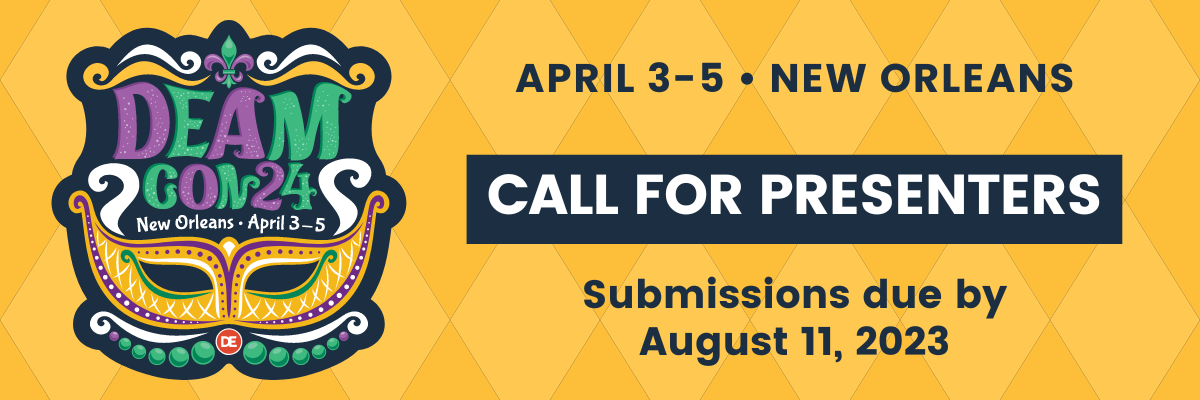
Tuesday, June 13, 2023: U.S. NLRB Returned to Obama-Era Independent Contractor Standard for NLRA Coverage
Ruling Makes It Harder for Employers to Treat Workers as Independent Contractors
Decision Will Also Impact OFCCP & EEOC as to Which “Workers” are “Employees”
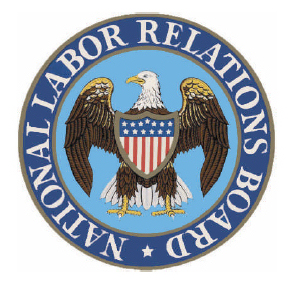
This determination matters because the NLRA extends its protections to only common-law “employees” and NOT to ”independent contractors.” As the NLRB now narrows the definition of Independent Contractors and correspondingly broadens the definition of the term “employee,” more workers become defined as “employees” who the NLRA will protect. Independent contractors are not NLRA-protected and thus do not have the right to unionize under federal law and are not otherwise federally protected from punishment for taking collective action to address undesirable job conditions. The NLRB’s new ruling makes it more difficult for organizations to treat workers as independent contractors rather than as employees.
In Atlantic Opera, all four current members of the board (including sole Republican Marvin Kaplan, who was part of the SuperShuttle majority) found that the makeup artists, wig artists, and hairstylists who worked at Atlanta Opera were “employees,” rather than “independent contractors” as their employer insisted. These employees were therefore eligible to hold an election to determine if a majority of the “employees” wished to become members of a local union of the International Alliance of Theatrical Stage Employees. However, Member Kaplan dissented from the reversal of SuperShuttle arguing that the legal standards under SuperShuttle were sufficient to find the at-issue workers to be “employees.
Obama-Era Standard
The Obama-Era standard the Board had set out in FedEx II, and which now again applies going forward at the NLRB, adopted the “common law” test that includes a non-exhaustive list of ten factors to collectively consider to determine whether the “worker” (neutral term) is an “employee” or “independent contractor.” Those factors until the Trump Administration, and now controlling again under the Biden Administration and going forward, are as follows:
- the extent of control which, by the agreement, the master may exercise over the details of the work;
- whether or not the one employed is engaged in a distinct occupation or business;
- the kind of occupation, with reference to whether, in the locality, the work is usually done under the direction of the employer or by a specialist without supervision;
- the skill required in the particular occupation;
- whether the employer or the workman supplies the instrumentalities, tools, and the place of work for the person doing the work;
- the length of time for which the person is employed;
- the method of payment, whether by the time or by the job;
- whether or not the work is a part of the regular business of the employer;
- whether or not the parties believe they are creating the relation of master and servant; and
- whether the principal is or is not in business.”
Under this standard, no one factor is decisive.
Trump-Era Standard
Five years after the Obama-Era FedEx II decision, the Trump-Era NLRB ruled that “entrepreneurial opportunity for gain or loss” should constitute the “animating principle” of the test. In essence, the Trump-Era test provided that workers who operate their own businesses should generally be considered to be “independent contractors.” (See our story here).
The New Ruling
On Tuesday, the Biden NLRB held in the Atlanta Opera case decision that “entrepreneurial opportunity” should be considered, but only in tandem with the other factors. (We call this the “bouilabaisse” legal test since the Board is now (again) requiring you to throw all the facts of the ten factors into a bowl, swirl them around and then make a judgment, simultaneously considering all of the factors and all of the facts those ten factors generated, whether the “worker” looks and smells more like an “employee” or an “independent contractor.”)
In its 21-page decision, the Board majority further explained that the assessment of entrepreneurial opportunity will, going forward, involve asking whether the evidence tends to show that a purported “independent contractor” is, in fact, rendering services as part of an independent business.
Applying this standard to the facts in the Atlanta Opera case, the Board majority determined that the bulk of the traditional common-law factors pointed toward “employee” status. The Board also determined that the evidence did not show that the stylists rendered services as part of their own independent businesses.
An NLRB press release on the ruling pointed out that, in December 2021, the Board invited parties and amici to submit briefs addressing whether the Board should reconsider its standard to determine the independent contractor status of workers. (See our story here.)
The Dissent
In his 16-page dissent, Member Kaplan asserted that SuperShuttle “provides the most effective measure for determining the important issue of whether individuals should be considered employees.” Kaplan also disagreed with the majority as to the implications of previous U.S. Court of Appeals for the District of Columbia Circuit rulings in the relevant FedEx cases. Applying the SuperShuttle standard, Kaplan agreed with the majority that the workers at issue were employees, rather than independent contractors.
Bonus Note: The OFCCP adheres to the “common law” test to determine who is an “employee” within the meaning of the three “statutes” OFCCP enforces against covered federal Government contractors (Executive Order 11246, Section 503 of the Rehabilitation Act of 1973, and the VEVRAA of 1974 (38 U.S.C. Section 4212)). Moreover, the EEOC adheres to the “common law” test to determine “employee” status under Title VII of the 1964 Civil Rights Act which it enforces against covered “employers.” Accordingly, covered federal contractors and covered employers may expect the Biden OFCCP and EEOC to now adopt the Atlanta Opera definition of the term “employee” when applying their statutes to determine whether any “worker” in dispute is a common law “employee” covered by the statutes both agencies enforce.
Thursday, June 15, 2023: Spring 2023 Regulatory Agenda Released, Multiple Final Rules Slated for Publication this Month
OFCCP Expects PDN Final Rule Publication This Month
Proposal to Require Subcontractor Reporting Delayed Until Next Year
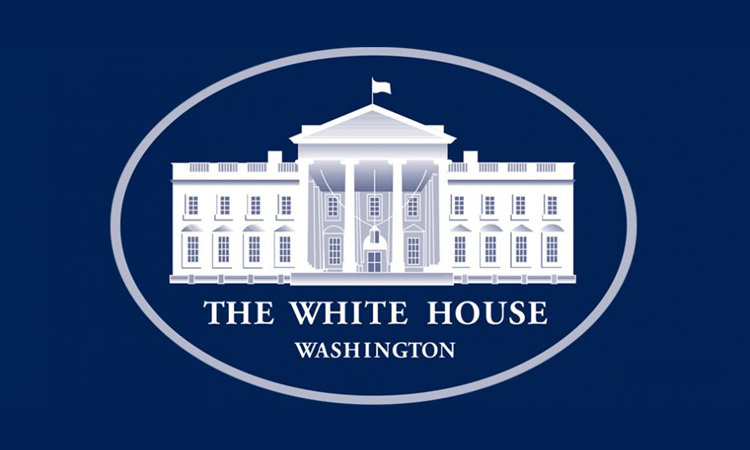
The number of OFCCP items – three – on the U.S. Department of Labor (“DOL”) Spring 2023 Regulatory Agenda was a reduction in comparison to the five OFCCP items on the DOL Fall 2022 Regulatory Agenda released in January. One of the two items previously listed on OFCCP’s Fall 2022 Agenda – a Proposed Rule to Require Reporting of Subcontractors – is now on the back-burner, designated as a “Long-Term Action.” The other item – Rescinding the Trump-era Religious Exemption – was completed in March. OFCCP did not add any new items.
Below, we discuss the OFCCP items and highlight several other upcoming items of interest. Note: “NPRM” stands for “Notice of Proposed Rulemaking.”
OFCCP Now Expects PDN Final Rule Publication This Month

The comment period ended on April 21, 2022, and OMB received twelve comments. We previously reported that OFCCP submitted this Final Rule to the OMB on December 21, 2022. The agency cited 41 CFR §§60-1, -2, -4, -20, -30, -40, -50, -300, & -741 as the regulatory authority for this Rule.
OFCCP pushed back the target date for its NPRM to “Modernize” Supply & Service Contractor Regulations from April to December 2023
This further delay of this proposed NPRM moves back OFCCP’s target publication date another eight months from the Fall 2022 Agenda target date of April 2023. OFCCP now anticipates that its NPRM to modernize the Affirmative Action Programs, recordkeeping, and other Executive Order 11246 requirements for Federal Supply and Service Contractors and Subcontractors (RIN: 1250-AA13), will be published in the Federal Register in December of 2023. The regulations housing these requirements are at 41 CFR §§60-1, -2, -20 & -300 and 41 CFR §§60-300, -741, & -742. In addition, the proposal “will consider modifications in light of Executive Order 13988, Preventing and Combating Discrimination on the Basis of Gender Identity or Sexual Orientation.”
With this long calendar punt, it is very possible that this proposed NPRM will not see the light of day in the first-term Biden Administration. This is because the White House has made it repeatedly clear to the federal Executive Branch agencies it controls that it wants all controversial policy issues floated and finished this year and not in calendar 2024 as the President heads into a very tough re-election bid culminating in the November 2024 Presidential election. This projected OFCCP overhaul of Affirmative Action Plan regulations will necessarily address fundamental issues of great concern to federal contractors. The federal Affirmative Action Plan community can be expected to vigorously and noisily resist OFCCP’s proposals. The louder the noise, the less likely the White House will be to back OFCCP’s proposed changes in an already super-heated and sensitive policy area like “Affirmative Action.” This is especially true in the absence of a political appointee Director managing OFCCP and passionate about the changes s/he will be proposing.
Final “Technical Amendments” to Update VEVRAA & Section 503 Jurisdictional Thresholds & Remove Gender Assumptive Pronouns Now Slated for December 2023
OFCCP’s target date for its rule-making technical corrections to update jurisdictional thresholds for the Vietnam Era Veterans’ Readjustment Assistance Act (VEVRAA) and Section 503 of the Rehabilitation Act is now December 2023 (RIN: 1250-AA16). That is nine months behind the March 2023 target date listed in the Fall 2022 Agenda. The thresholds were adjusted for inflation by the Federal Acquisition Regulation Council, pursuant to section 807 of the Ronald Reagan National Defense Authorization Act, codified at 41 USC §1908, OFCCP explained. The upcoming Rule will also correct OMB control numbers for OFCCP information collection requirements and remove gender-assumptive pronouns. The regulatory citation for this item is 41 CFR §§60-1, 2, 4, 20, 30, 40, 300, 741, & 999.
High-level point: This OFCCP delay is tactical because OFCCP’s Section 503 and VEVRAA jurisdictional thresholds would increase dramatically from the levels the agency was previously forced to adjust upwards by 50% in 2017 (to $15,000 from $10,000 (as to Section 503) and to $150,000 from $100,000 and earlier from $50,000 (as to VEVRAA). So, there is no utility to OFCCP to announce that fewer federal contractors are covered. And note, these are merely “technical” amendments, according to OFCCP, which most agencies can easily process to conclusion in a matter of months, from start to finish.
However, the absence of OFCCP’s publication of the new jurisdictional thresholds does not mean OFCCP’s jurisdictional thresholds have not already increased. (Indeed, OFCCP has yet to update its VEVRAA Rules to recite the 2017 change in its coverage threshold from $100,000 to $150,000 even though OFCCP nonetheless acknowledges, as it must, that its VEVRAA jurisdictional threshold is in fact (“a” covered contract of) $150,000, or more. PROOF OF THEOREM-COMPARE: OFCCP’s VEVRAA out-of-date Rules at 41 CFR Section 60-300.4(a) (reciting (erroneously) the $100,000 jurisdictional threshold) with that portion of OFCCP’s Website titled Jurisdiction Thresholds and Inflationary Adjustments (acknowledging that VEVRAA’s actual jurisdictional contract valuation threshold is in fact ”a” covered federal Government contract valued at $150,000, or more).
So, the takeaway is that OFCCP’s Section 503 and VEVRAA Rules have ALREADY increased. It is just that OFCCP has yet to update its Section 503 and VEVRAA Rules to so acknowledge to the public the change which has already occurred, as a matter of law. Those contractors uncertain whether they are signatory to a federal contract with financial value sufficient to provoke OFCCP jurisdictional authority under either or both Section 503’s or VEVRAA’s current jurisdictional thresholds should consult legal counsel (since calculating a federal contract’s economic value often itself entails yet another involved legal analysis).
Final OFCCP Rule Rescinding Trump-Era Religious Exemption Rule Completed in March
In March 2023, OFCCP published its Final Rule (RIN: 1250-AA09) to rescind, in its entirety and without replacement, the Trump Administration’s December 8, 2020, Final Rule, “Implementing Legal Requirements Regarding the Equal Opportunity Clause’s Religious Exemption.” The new Final Rule – “Rescission of Implementing Legal Requirements Regarding the Equal Opportunity Clause’s Religious Exemption Rule” – took effect on March 31, 2023. (See our story with all the details here)
June 2024 Is The Now Anticipated Publication Date for OFCCP’s NPRM to Require Contractors to Report their Subcontractors to OFCCP
OFCCP has now pushed this proposed NPRM way back from OFCCP’s previously anticipated March 2023 date in the Fall 2022 Agenda. OFCCP currently has targeted June 2024 as the date to publish its NPRM to be titled “Notification of Supply and Service Subcontract Awards” (RIN: 1250-AA15). This item is now designated a “Long-Term Action.”
The proposal would, OFCCP claims, “add provision(s) to the regulations implementing Executive Order 11246 requiring contractors to provide notice to OFCCP when they award supply and service subcontracts. The notice would include information currently unavailable to OFCCP enabling it to schedule supply and service subcontractors for compliance evaluations.” The regulatory citation listed for this Rule is “Not Yet Determined,” but the legal authority is listed (generally) as Executive Order 11246.This field-long calendar punt points out three things:
- OMB does not believe OFCCP has legal authority to compel federal contractors to reveal to OFCCP the contractor’s “subcontractors.” Accordingly, OMB has sent OFCCP back to the “drawing board” to draft a proper proposal to submit to OMB;
- This is a burdensome proposal OFCCP has survived quite nicely without for over a half century. Accordingly, OMB’s first instinct in such situations lacking new regulatory authority is “What current compliance task do you want to give up so the “burden hours” that task costs contractors may be shifted to this new task”? So, OMB has sent this proposal back to the drawing board for a second reason wholly unrelated to the first push back to OFCCP;
- It is likely this proposal will never see the light of day in a first Biden term since OFCCP would be proposing it in June 2024 only five months before the 2024 Presidential election. Debate of the merits of this proposal would thus be occurring during the final crucial 90-days before the election. Context Note: Every President running for re-election “brings down the curtain” on federal agency regulatory activity and political controversy on a date certain across all of the Executive Branch of the federal government. That date after which the incumbent President wants the federal agencies to go quiet and not inadvertently inject new political issues into the White House’s re-election strategy always varies with each President and each Presidential race. In “the old days,” it was a good bet that the “curtain down” date was early Spring of election year. This White House, however, knows it is facing a very tough political battle and has already issued orders to bring the curtain down at the federal agencies in calendar 2023.As a result, it looks to us as though OMB just consigned this OFCCP proposal to improbable status during first-term Biden. OFCCP’s proposal will most likely just sit there and be left unattended. If the President wins re-election, OFCCP, like all federal agencies, will then dust off its regulatory agenda and see if it can muscle it through in the first 100 days of the new Administration when the new President is at the zenith of his political power. If Republicans win the White House effective January 20, 2025, or even just hold the House and win the Senate back, OFCCP’s following regulatory agenda will look quite different.
WHD Independent Contractor Final Rule Slated for August 2023
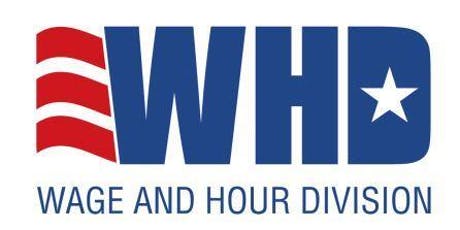
How We Got Here: The WHD published an NPRM in the Federal Register on Thursday, October 13, 2022, that would apply a six-part “Totality of Circumstances” Test to determine whether a “worker” (neutral term) is an “employee” or an “ independent contractor” under the Fair Labor Standards Act. We discussed this NPRM in detail here. The comment period on this proposal closed on December 13, 2022, with approximately 54,400 public comments submitted.
Also of note: This upcoming Rule is instrumental to the final disposition of a pending court challenge to the Biden Administration’s attempt to rescind the Trump-Era independent contractor rule (we discussed that case here). The case is currently pending in the U.S. Court of Appeals for the Fifth Circuit in New Orleans (Coalition for Workforce Innovation v. Walsh; Case No. 22-40316).
On Friday, June 9, the DOL requested a stay in the case for 120 days, stating that the Department is continuing to review and consider the comments received during the comment period on the NPRM. The Department further stated that its issuance of a Final Rule “should make it unnecessary to pursue this appeal” and the DOL expects that to be completed within the 120-day period, which ends in October. The Fifth Circuit granted the unopposed motion. The Department’s latest statement to the Court foreshadows a major revision coming to the Department’s proposed Rules which leads the Department, at least, to conclude that the coming change will moot the legal challenge to the Rule as proposed.
The speculation is that this announced change of proposed policy may be the quid pro quo needed for a U.S. Senator currently “on-the-fence” as to the Julie Su nomination to find his or her way to vote in favor of Acting Secretary Su’s nomination to be the U.S. Secretary of Labor confirmed by the Senate. (Federal agencies rarely have an 11th hour change of heart about the direction of their regulatory policies, and particularly after enduring political criticism and after litigation has ensued. But, wisdom late is better than wisdom never).
WHD Proposal on Certain Exemptions Now Slated for August 2023
August 2023 is now the anticipated publication date of the WHD’s NPRM entitled, “Defining and Delimiting the Exemptions for Executive, Administrative, Professional, Outside Sales, and Computer Employees” (RIN: 1235-AA39). This new target is three months behind the May 2023 date slated in the Fall 2022 Agenda. The proposal would revise the regulations at 29 CFR §541, which implement the exemption of bona fide executive, administrative, and professional employees from the Fair Labor Standards Act’s minimum wage and overtime requirements.
This proposed Rule, like the other above-discussed USDOL Rules, is controversial. This Rule, too, has been pushed back to allow the last round of the Julie Su confirmation battle to proceed without the distraction and opposition these Rules could bring to further bedevil her already heavily burdened prospects for confirmation as the next U.S. Secretary of Labor.
Nondisplacement of Qualified Workers Under Service Contracts Final Rule Expected this Month
On July 15, 2022, the WHD published its NPRM on “Nondisplacement of Qualified Workers Under Service Contracts” (RIN: 1235-AA42). The Division intends the Rule to keep individuals employed after a federal service contract has expired (the Service Contract Act of 1965, as amended, covers most service contracts over $250,000). As proposed, the Rule would generally require contractors and subcontractors that work on covered federal service contracts to place clauses into successor contracts involving the “same or similar” work for existing services deals to provide employees a right of first refusal for positions under the contract for which those employees are qualified. For more details, see our story here.
The public comment period closed on August 15, 2022, with only 33 comments submitted. In the Fall 2022 Agenda, the WHD planned to publish, in December 2022, an NPRM to “Analyze Comments.” However, that plan never materialized, and the Spring 2023 Agenda states that the WHD’s target date for its Final Rule is now June 2023.
Final Rule Updating Davis-Bacon & Related Acts Regulations Expected This Month
The WHD published its NPRM to update the Davis-Bacon and Related Acts regulations (RIN: 1235-AA40) on March 18, 2022. The comment period ended on May 17, 2022, with approximately 40,935 comments submitted. Our stories here and here detailed that proposal. In the Fall 2022 Agenda, the WHD set a February 2023 publication for its Final Rule, but the Spring 2023 Agenda now lists the target date as June 2023.
OSHA’s Publication of a Final Rule on Occupational Exposure to COVID-19 in Healthcare Settings Slated for this Month
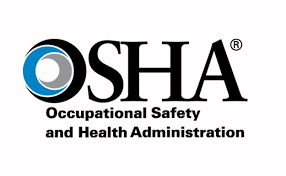
It is unclear why OSHA is still planning to proceed with this Rule since President Biden has declared the COVID-19 pandemic concluded and had ordered the federal agencies to stand down from their various vaccination mandates. The public health and workplace threats from COVID-19 is old news according to the White House. We will have to wait to see the language of the final OSHA Rule to see if it perhaps lays down safety rules of use for future respiratory pandemics affecting U.S. workers.
DOL OASAM’s NPRM to Revise/Clarify WIOA EEO Regulations Related to Sex Target is Now Slated for August 2023
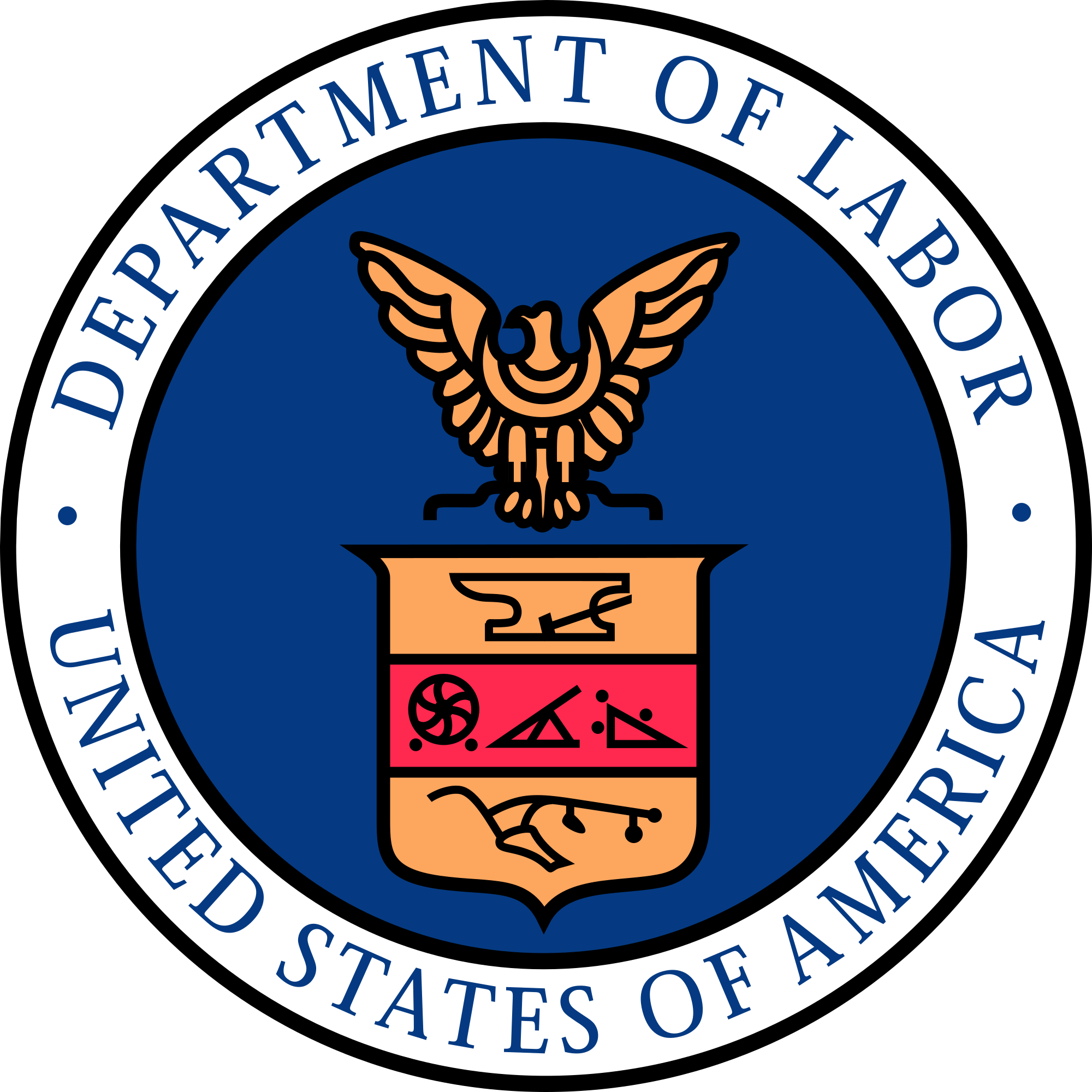
The WIOA is a 2014 law designed to help job seekers access employment, education, training, and support services to succeed in the labor market. Section 188 of WIOA prohibits the exclusion of an individual from participation in, denial of the benefits of, discrimination in, or denial of employment in the administration of or in connection with any programs and activities funded or otherwise financially assisted in whole or in part under Title I of WIOA because of sex, among several other protected bases. The upcoming proposal would update DOL regulations at 29 CFR Part 38 to clarify that discrimination on the basis of sex includes discrimination on the basis of sexual orientation, consistent with the Supreme Court’s 2020 decision in Bostock v. Clayton County (140 S. Ct. 1731) and subsequent legal developments.
NLRB Still Anticipates Publishing its Final Joint Employer Rule in August 2023

Election Protection Final Rule Still Slated for August 2023 publication
The NLRB published its NPRM on “Fair Choice and Employee Voice” on November 4, 2022. The proposal would revise the representation election procedures located at 29 CFR §103 (RIN: 3142-AA22), with a focus on amendments it issued on April 1, 2020. It would rescind the current Final Rule adopted by the prior Board majority in 2020. The proposed Rule would rescind and replace the 2020 amendments to the Board’s Rules governing blocking charges and the voluntary-recognition bar doctrine and rescind the amendment governing proof of majority support for labor organizations representing employees in the construction industry. Our story here further explains the proposal.
After an extension, the comment period concluded on February 2, 2023, with 110 comments submitted. The Spring 2023 Agenda target of August 2023 is unchanged from the Fall 2022 Agenda.
New Item: NLRB Intends to Publish a Direct Final Rule on Quickie Election Procedures in August 2023
In August 2023, the NLRB plans to publish a Direct Final Rule revising the representation election procedures located at 29 CFR §102, with a focus on the amendments issued on December 18, 2019. For details on those amendments and related litigation, see our story here. The RIN number for this item is 3142-AA18.
The NLRB, which has shown a consistent command of its regulatory and policy agenda since the beginning of the Biden Administration (to the consternation of U.S. employers), has clearly heard the White House’s direction to conclude all controversial public policy-making in this calendar year. So, the NLRB has jumped to beat the now quickly closing 2023 calendar.
No Target Date for FTC’s Final Rule on Non-Competes; Agency Still Reviewing 20,000+ Public Comments
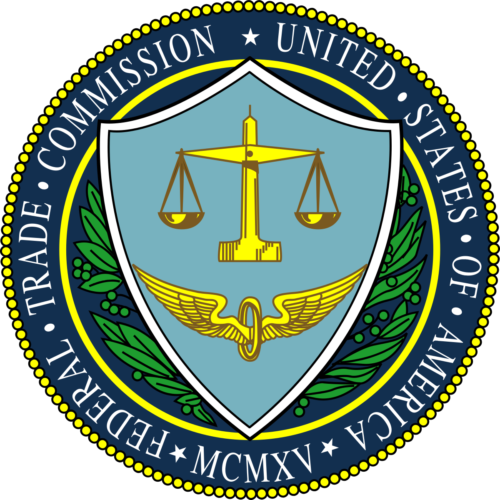
The Spring 2023 Agenda does not include a target date for the FTC’s Final Rule (RIN: 3084-AB74). Rather, it indicates that the FTC staff is reviewing public comments this month.
Upcoming, But Not on Spring 2023 Regulatory Agenda: EEOC NPRM on Regulations to Implement PWFA

However, employers should be aware that the “Pregnant Workers Fairness Act” (“PWFA”) will take effect June 27, 2023. Moreover, the PWFA specifically directs the EEOC to issue regulations IN FINAL FORM to implement the new statute by December 29, 2023 (now only 6 1/2 months away). On April 12 (two months ago now), EEOC Vice Chair Jocelyn Samuels and Commissioner Keith Sonderling told attendees at DEAMcon23 in Chicago that the Commission was currently working on proposed regulations to implement the PWFA
For her part, Vice Chair Samuels made nationwide headlines from the podium at DEAMcon23 when she announced that “my hope is that we will be able to get out a proposed regulation very shortly within a matter of weeks or months.” Ms. Samuels, an academic scholar before joining the EEOC as its Vice Chair, and one of the nation’s lawyers most knowledgeable about gender, sexual orientation and gender identity discrimination, explained her view that this timing will allow for “a robust opportunity for public comment. And then the time to consider those comments as we finalize the Rule,”
On June 9, 2023, Senate Health, Education, Labor, and Pensions (HELP) Committee Ranking Member Bill Cassidy (R-LA) sent a letter to the EEOC inquiring about the status of these proposed regulations.
It is not clear how much longer EEOC Chair Charlotte Burrows can prolong the process of publishing a proposed Rule while awaiting the arrival at the EEOC of the third Democrat Commissioner (controversial nominee Kalpana Kotagal). Chair Burrows, of course, needs a third Democrat Commissioner (joining herself and Vice Chair Samuels) to trump any opposition from the Commission’s two Republican Commissioners as the Commission sits down to collectively debate the content of the Commission’s proposed Rule to implement the PWFA. Oh, politics, politics, politics.
Looking Ahead:
Upcoming Date Reminders
NOTE: With publication last week of the Biden Administration’s Spring Regulatory Agenda, almost all future regulatory publication dates the various federal Executive Branch agencies have previously projected HAVE CHANGED (as we describe above in some detail as to the more important proposals).
Also, with today’s calendar, we now adopt the habit of embedding hyperlinks to the underling federal regulatory proposals instead of publishing the full URL to those proposals. (Our use of embedded hyperlinks helps keep the calendar shorter and presents a more streamlined appearance.)
NEW | June 2023: OFCCP’s current target date for its Final Rule on Pre-Enforcement Notice & Conciliation Procedures (RIN: 1250-AA14)
NEW | June 2023: U.S. DOL WHD’s current target date to publish its Final Rule on Nondisplacement of Qualified Workers Under Service Contracts (RIN: 1235-AA42)
NEW | June 2023: U.S. DOL WHD’s current target date for its Final Rule on Updating the Davis-Bacon and Related Acts Regulations (RIN: 1235-AA40)
NEW | June 2023: U.S. OSHA’s current target date to publish its Final Rule on Occupational Exposure to COVID-19 in Healthcare Settings (RIN: 1218-AD36)
Monday, June 19-Thursday June 22, 2023: The Workforce Metrics Retreat in White Sulphur Springs, West Virginia Begins (last chance to register remote or in person): “This retreat will bring together equal employment opportunity/affirmative action (EEO/AA); diversity, equity, inclusion, belonging and access professionals (DEIBA+); subject matter experts and corporate voices for candid conversations related to the seemingly endless resistance and rollback on several fronts related to AA and DEIAB+ initiatives.”
Tuesday, June 27, 2023: The federal Pregnant Workers Fairness Act takes effect
Thursday, June 29, 2023: Deadline for covered federal contractors and subcontractors to certify, via OFCCP’s online Contractor Portal, that they have developed and maintained affirmative action programs for each establishment or functional unit
NEW | August 2023: U.S. DOL WHD’s current target date for its Final Rule on Employee or Independent Contractor Classification Under the Fair Labor Standards Act (RIN: 1235-AA43)
NEW | August 2023: U.S. DOL WHD’s current target date for its Notice of Proposed Rulemaking on Defining and Delimiting the Exemptions for Executive, Administrative, Professional, Outside Sales and Computer Employees (RIN: 1235-AA39)
NEW | August 2023: U.S. NLRB’s target date for its Direct Final Rule on Quickie Election Procedures (RIN: 3142-AA18)
August 2023: U.S. NLRB’s current target date for its Final Rule on Standard for Determining Joint-Employer Status (under the NLRA) (RIN: 3142-AA21)
August 2023: U.S. NLRB’s current target date for its Final Election Protection Rule (RIN: 3142-AA22)
NEW | August 2023: U.S. DOL’s OASAM’s current target date to publish Proposed Rule on “Revision of the Regulations Implementing Section 188 of the Workforce Innovation and Opportunity Act (WIOA) to Clarify Nondiscrimination and Equal Opportunity Requirements and Obligations Related to Sex” (RIN: 1291-AA44)
Friday, August 11, 2023: Comments due on the EEOC’s proposal to extend – without change – the Information Collection Requirement (“ICR”) for the ADEA/OWBPA waiver third-party disclosure requirements
Friday, August 11, 2023: Deadline for Presenter Proposal Submissions for DEAMCon 2024
NEW | December 2023: OFCCP’s current target date for its Notice of Proposed Rulemaking to “Modernize” Supply & Service Contractor Regulations (RIN: 1250-AA13)
NEW | December 2023: OFCCP’s current target date for its Final Rule on “Technical Amendments” to Update Jurisdictional Thresholds & Remove Gender Assumptive Pronouns (RIN: 1250-AA16)
NEW | December 29, 2023: Statutory deadline for EEOC regulations to enforce the Pregnant Workers Fairness Act
Wednesday, April 3 – Friday, April 5, 2024: DEAMcon24 New Orleans
NEW | June 2024: OFCCP’s current target date for its Notice of Proposed Rulemaking to Require Reporting of Subcontractors (RIN: 1250-AA15)
THIS COLUMN IS MEANT TO ASSIST IN A GENERAL UNDERSTANDING OF THE CURRENT LAW AND PRACTICE RELATING TO OFCCP. IT IS NOT TO BE REGARDED AS LEGAL ADVICE. COMPANIES OR INDIVIDUALS WITH PARTICULAR QUESTIONS SHOULD SEEK ADVICE OF COUNSEL.
SUBSCRIBE.
Compliance Alerts
Compliance Tips
Week In Review (WIR)
Subscribe to receive alerts, news and updates on all things related to OFCCP compliance as it applies to federal contractors.
OFCCP Compliance Text Alerts
Get OFCCP compliance alerts on your cell phone. Text the word compliance to 55678 and confirm your subscription. Provider message and data rates may apply.

